The world is filled with so many wonderful places, and that’s often why a lot of us travel across the globe to see and experience those sites ourselves. Most of the time they meet our expectations, although sometimes we come home feeling disappointed for various reasons – overtourism, pushy vendors, and varying states of disrepair to structures that we had seen so often on the internet or on the glossy pages of travel magazines prior to our visit, to name a few. However, there are places that, despite their popularity and the plethora of their images both on and offline, will always evoke admiration even from the most jaded travelers. And I find that Petra fits this category.
It is probably Jordan’s most recognizable landmark. Images of the Treasury (Al Khazneh) adorn the covers of a multitude of guide books on this Middle Eastern kingdom. And I believe most people, including me, who go to Jordan have Petra on their minds at the trip-planning stage and even during their stay in the country. Today, this part of the kingdom attracts around half a million tourists every year, but that was not the case for many centuries. Like Cambodia’s Angkor which was brought to a broader audience by the 2001 film Lara Croft: Tomb Raider where Angelina Jolie explores the silent and mysterious corners of Ta Prohm and dangles from tree roots to find an artifact to control time, Petra was ‘introduced’ to the world by the 1989 Hollywood blockbuster Indiana Jones and the Last Crusade. It is where Indy (Harrison Ford) finds the Holy Grail as well as the background for the final scenes of the movie where Indy, his father (Sean Connery), Marcus (Denholm Elliot) and Sallah (John Rhys-Davies) escape the temple through a narrow passageway we now know as the Siq.
However, before we get to see all these places with our own eyes, James and I have to travel more than 200 kilometers to the south from Amman, Jordan’s fascinating capital. From the satellite images on Google Maps, it seems like the highway we have to take cuts through the desert almost from the very beginning at the outskirts of the city. But it is supposedly faster than taking the King’s Highway, a historic road that has been used by the armies of ancient powers to wage wars against each other, by merchants to trade commodities between cities in Egypt and the Levant, and by Hajj pilgrims to reach Mecca before the advent of air travel.
Our driver who picks us up at our hotel in downtown Amman arrives on time at 8 am, and shortly afterward he navigates his way to Wadi Musa, a small town in the country’s south which serves as the gateway to Petra. The drive feels long and, after a while, very monotonous, thanks to the endless desert as far as the eye can see on both sides of the highway. But what intrigues me most is the fact that despite this harsh environment, there are small houses here and there, peppering the arid landscape. Halfway into the journey, our driver pulls over at a shop with a restaurant and restrooms inside. The souvenirs look nice, for sure. However, I’m more interested in the book section, and end up getting myself a hardcover volume on the history and art of Petra.
Twenty minutes later we’re already back on the road, venturing deeper into the south under the scorching desert sun. I’m glad we’re in an air-conditioned car, not on a camel, but more on that in a later post. Hours later, the monotonous landscape suddenly changes. Something on the horizon comes into view: rose colored mountains through which our driver takes us. Then, a small town emerges. We have finally arrived in Wadi Musa, which means “Valley of Moses” in Arabic. This remote corner of Jordan was named after the important figure in the three Abrahamic religions due to its significance as the place where Moses is believed to have struck water from the rock for his followers. The site is now known as Ain Musa, or Moses’s spring. In its vicinity, on one of the imposing mountains, lies what is today regarded as the tomb of Aaron, the brother of Moses who’s also known as Harun in the Islamic world.
After checking in at a hotel near the town’s main roundabout and having a lunch of maqluba (a traditional Levantine dish which consists of rice, eggplants, chicken and spices cooked in a pot then flipped upside down on a plate and served), we immediately walk downhill toward the main entrance to the archaeological site of Petra, which was inscribed on the UNESCO World Heritage list in 1985. At the final turn, we stumble upon bigger hotels run by international chains, conveniently located just a few steps away from the gate to the ancient city. Just across the street is the Petra Museum, a sleek brand new building funded by the Japan International Cooperation Agency (JICA) and inaugurated in April 2019, six months prior to our visit.
Months before this trip, we decided to purchase the Jordan Pass which covers most of the country’s historical places with options for one-, two-, or three-day pass for Petra. Obviously we chose the longest one, for we knew we would spend a lot of time at this place that had been on our wish lists for years. After checking our Jordan Passes, the staff member at the entrance lets us in, and we find ourselves on the same ancient road which people took to enter and leave Petra two thousand years ago.
Its location at the crossroads of trade routes that branched out to Mesopotamia to the east, Arabia to the south, Egypt to the west, as well as Syria and the Mediterranean to the north made the mountainous area in which Petra was built very strategic. However, due to its harsh environment many powers in the region saw this part of the Levant as merely a barren land. When Babylonia expanded its territory westward, it is believed that this campaign pushed a group of nomadic people to the edges of the empire to this very desolate land. These people later became known as the Nabateans.
At first they found refuge in this mountainous landscape in the middle of the desert. They continued their nomadic lifestyle by setting up tents across the rugged terrain. Over time, they started digging large cisterns in the solid rock to conserve the water they collected during rare rain periods; they also carved out niches which provided them with sturdier shelters from the elements; and eventually they left their tents and settled in the man-made caves instead. They named this place Raqmu, which the Greeks then called Petra, or “the rock”, a name we still use today. Thanks to their ingenious water management, the Nabateans made a living by supplying water to passing caravans. In exchange, they imposed a levy on those foreign merchants and became actively involved in the trade of spices, silver, frankincense and myrrh themselves.
The Nabateans amassed more riches with each passing year, which brought this obscure place to the attention of the rulers of Greece, Egypt and Syria. For more than a hundred years since the fourth century BC, apart from running their profitable businesses, the Nabateans were kept busy defending themselves against invading forces who had one thing in common: an ambition to incorporate Raqmu or Petra into their own realm. However, thanks to the rocky mountains which acted as natural fortresses, the narrow and easily defendable entrance to Raqmu, and the labyrinthine passes amid the towering peaks, the Nabateans managed to drive every conquering force away from the city, therefore retaining their independence. Then, following the decline of the Greeks, and backed by a significant amount of wealth, the Nabateans eventually established their own monarchy with Aretas I who ascended the throne in 168 BC as their first local sovereign ever recorded in history.
In the subsequent years, the Nabateans managed to expand their trade network to places as far as Hegra (in the northwestern corner of modern-day Saudi Arabia), the Gulf of Aqaba, and towns in what is now Israel. In Petra – by this time already a well-established capital of the Nabateans – this increasing wealth became more apparent with the construction of bigger and more elaborate rock-hewn houses and tombs. With such a fast-growing status, the Nabateans came into conflict with the Jewish world and the Romans, including a failed siege of Jerusalem by King Aretas II in 65 BC. The Romans under Pompey, who by that time had already controlled the Holy City, pushed the Nabateans back and managed to besiege Petra. This forced the Nabateans to pay tributes to Rome, effectively making it a client state to the latter, which allowed them to maintain a certain degree of independence.
For decades, both sides managed to maintain a stable relationship, until 59 BC when Malchus I became the king of the Nabateans. The new king decided to ally himself with the Parthian Empire, a major power in ancient Iran to the east of the Roman world. Together they waged military campaigns against the Romans which resulted in the former’s defeat. This worsened the relationship between Petra and Rome and prompted the latter to find new trade routes to bypass the Nabatean capital.
In 8 BC, a new Nabatean king ascended the throne and took the name Aretas IV. Under his reign, Petra experienced a new era of prosperity and peace which led to a “construction boom” of buildings on a monumental scale, most of them carved into the sandstone mountains that surrounded the city. Of all structures commissioned under his rule, the Treasury or Al Khazneh is the one we are most familiar with today – its iconic façade is emblematic not only of Petra, but also of the Hashemite Kingdom of Jordan itself.
Two thousand years later, James and I are walking down the gravel path that leads to the Siq, the main pathway to the ancient city of Petra. Although we both have the Treasury on our minds, it is hard not to be impressed with other structures we see along the way, including the Djin Blocks (three monolithic cubes created by cutting out a sandstone slope) as well as the Obelisk Tomb and the Bab Al Siq Triclinium that sits directly beneath the tomb. As we walk further, we come across a small bridge over a dried out river (purposefully left without water today for visitors’ safety) and arrive at the mouth of the Siq, a narrow passageway created by eons of wind and water erosion. On both sides of the gorge are niches which until 1896 still supported an arch. Unfortunately, after withstanding the elements for many centuries, that year it collapsed due to an earthquake.
While most visitors are busy taking photos of the Siq itself and the worn out niches along its walls, behind their back are vestiges of the Nabateans’ ingenuity in water management which helped propel them into great prosperity. Aqueducts were dug out on both walls of the Siq, upon which clay pipes were installed to channel water from surrounding springs into cisterns spread across Petra. The Petra Museum provides a wealth of information on this, and it blows my mind to realize just how advanced the Nabateans’ technology truly was.
The Siq snakes and curves for approximately 1.2 kilometers, narrowing at certain points into a three-meter wide fissure, rendering some parts of this entrance way to Petra dark even on a clear sunny day. This benefited the caravans in the past as these sections of the Siq made an ideal place as resting stations for the protection they provided from harsh weather conditions. The presence of merchant caravans is immortalized in carvings that adorn the gorge’s walls, although most of them have been badly damaged and eroded. Also located in the Siq are votive niches (inside which baetyli, or sacred stones, once resided) and stelae, suggesting this place’s sacredness for both locals and foreign merchants. We keep following where the Siq’s original stone paving – only rediscovered between 1997 and 1998 underneath layers of debris and sand that had accumulated over centuries – leads us. Horses and horse-drawn carriages dash past us and other tourists, through large openings where we can see the sky and tight gaps between the Siq’s walls that are barely large enough for those carts. And finally, there it is. A thin line of light at the end of the ancient pathway, revealing a sight I will never forget.
A few meters in front of us, at the very end of a narrow dark section of the Siq, lies that ancient structure now emblematic of Jordan itself: the Treasury or Al Khazneh. Even from this angle, it already looks impressive. But to truly marvel at the grandeur of this spectacular monument, one needs to complete his or her walk on the Siq and join hundreds of other tourists by stepping out into a wide natural courtyard. We all look up to the 40-meter high façade of this relatively well-preserved masterpiece of the Nabateans, admiring its fine architectural details as well as sculpted figures that were damaged centuries after its completion.
Believed to have served as the tomb of Aretas IV, the Treasury was built in the first century AD and constructed on top of even older funerary chambers. Its façade is a telltale sign of the cosmopolitan nature of the Nabateans, who took elements from different cultures to adorn both levels of the structure. At the center of the upper level is the Egyptian goddess Isis, flanked by a pair of Victories or Nikes and also a pair of Amazons (both sets inspired by the Greco-Roman world). On the lower level, guarding the entrance to the Great Hall, are Castor and Pollux, twin half-brothers in Greek and Roman mythology. The Nabateans’ indigenous architectural style is found atop the split pediment on the upper level in the form of double eagles. These ornate sculptures, however, were vandalized by Christian and Muslim iconoclasts many centuries later.
In Indiana Jones and the Last Crusade, the Treasury is depicted as the true resting place of the Holy Grail. However, in reality the monument holds empty chambers which could once be accessed by tourists but are now off-limits to prevent damage to the sandstone due to touching, leaning, rubbing and an increase in humidity. James and I obsessively try to capture the icon from multiple angles, and before we know it we’ve already taken hundreds of shots of the Treasury. After all, it is a dream come true for both of us to see this ancient wonder with our own eyes.
To our right hand side as we stand facing the Treasury, the pathway continues. It takes us through the Street of Façades, named after the multiple tombs that were carved out of the red sandstone on both sides of the road, past even more burial places with Assyrian crow-steps sculpted above each entrance, and onto a massive Roman theater. This venue of artistic performances was dug out of the slope of a hill amid a series of cave-dwellings overlooking the main street below. I can only imagine the magnificence of Petra during its heyday.
We walk further on, and not long afterward we arrive at a sizable plain – on which the urban center of Petra had been constructed – with towering mountains guarding its west and east sides. If you have watched the 1999 Hollywood blockbuster movie The Mummy and its sequel The Mummy Returns, you must know about Hamunaptra, a fictional Egyptian city which stays hidden from plain sight most of the time. For some reason, the soundtrack that accompanies the scenes where Hamunaptra is revealed to the movies’ protagonists immediately plays in my head as I lay my eyes on the ruins that are spread out all across this plain. There are only a few places I’ve been to that left such a deep impression on me, and Petra is near the top of that list. Its sheer size is unfathomable given the harsh conditions of its geography, and everything about the place blows me away again and again as I take further steps into the center of this ancient city.

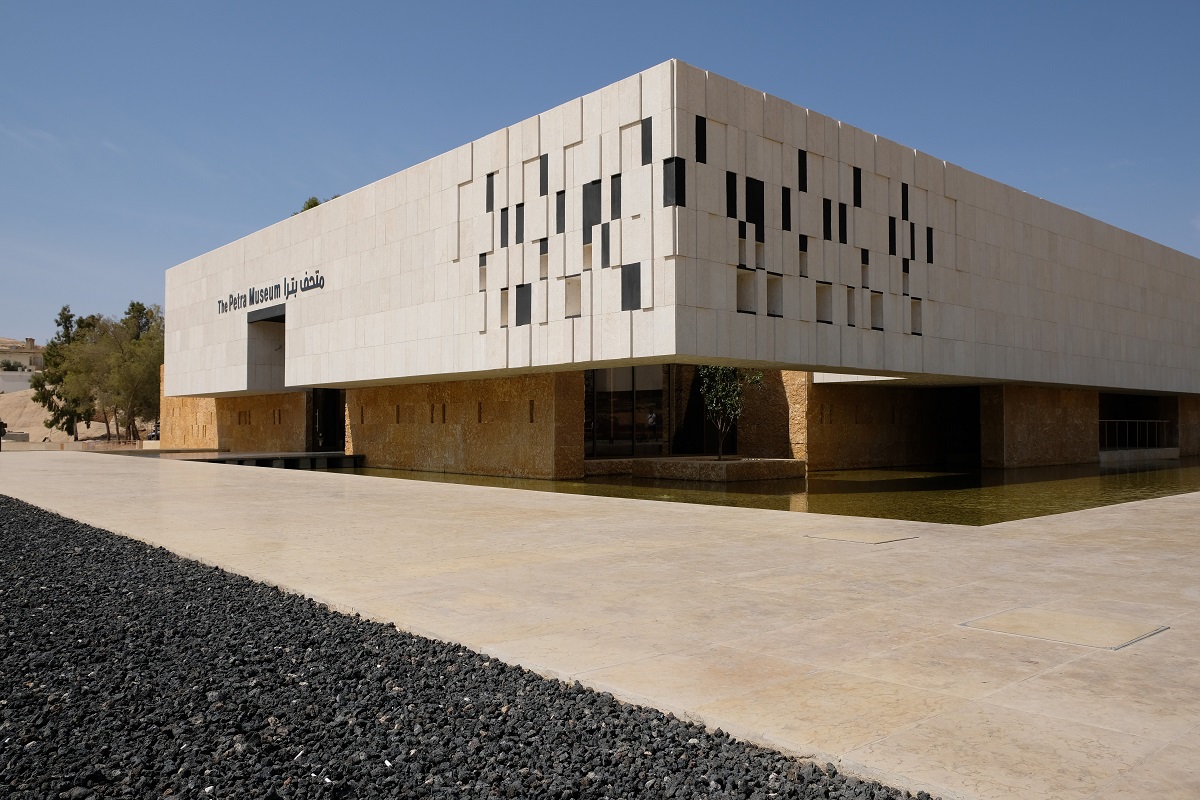

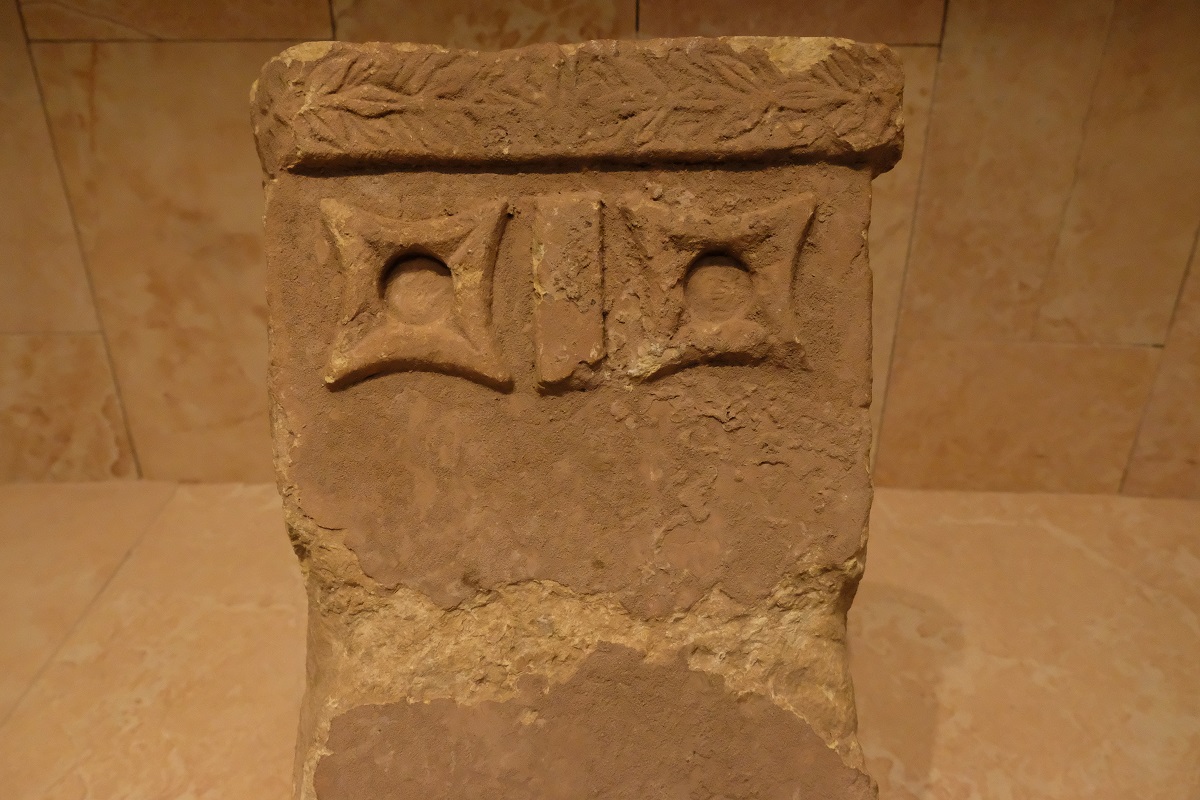

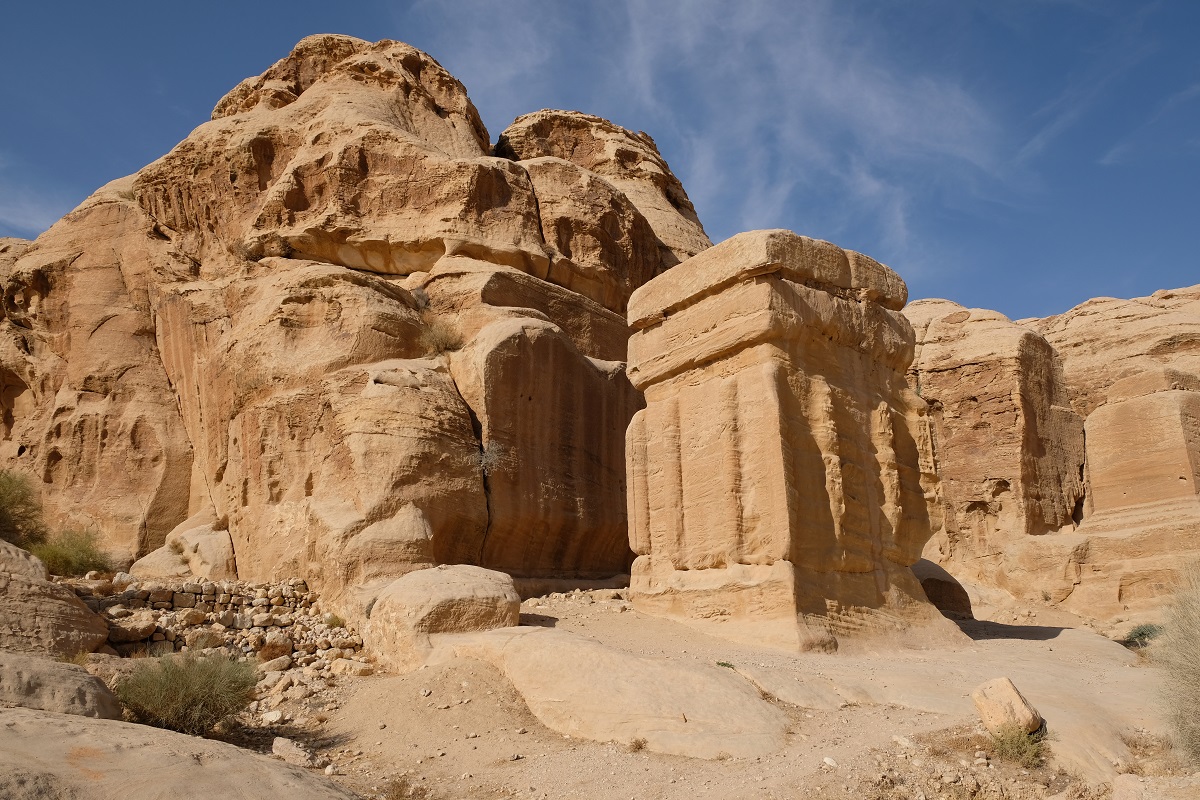
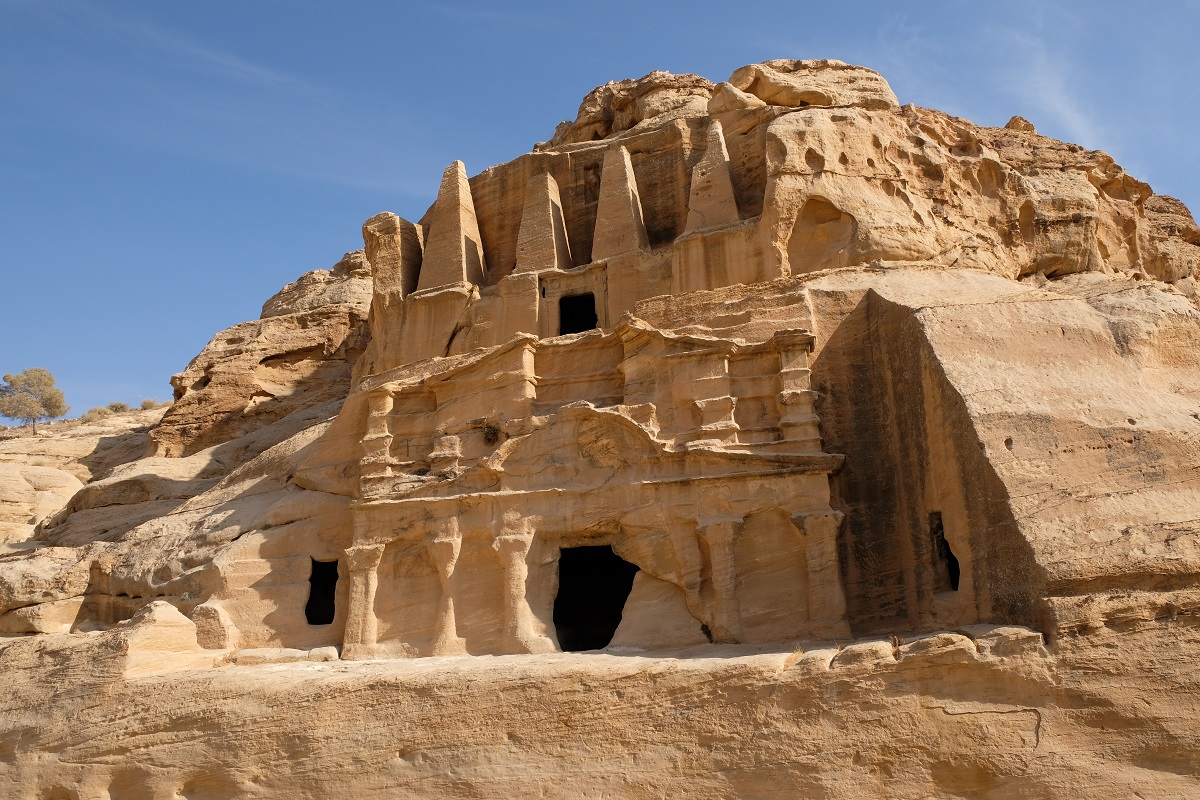

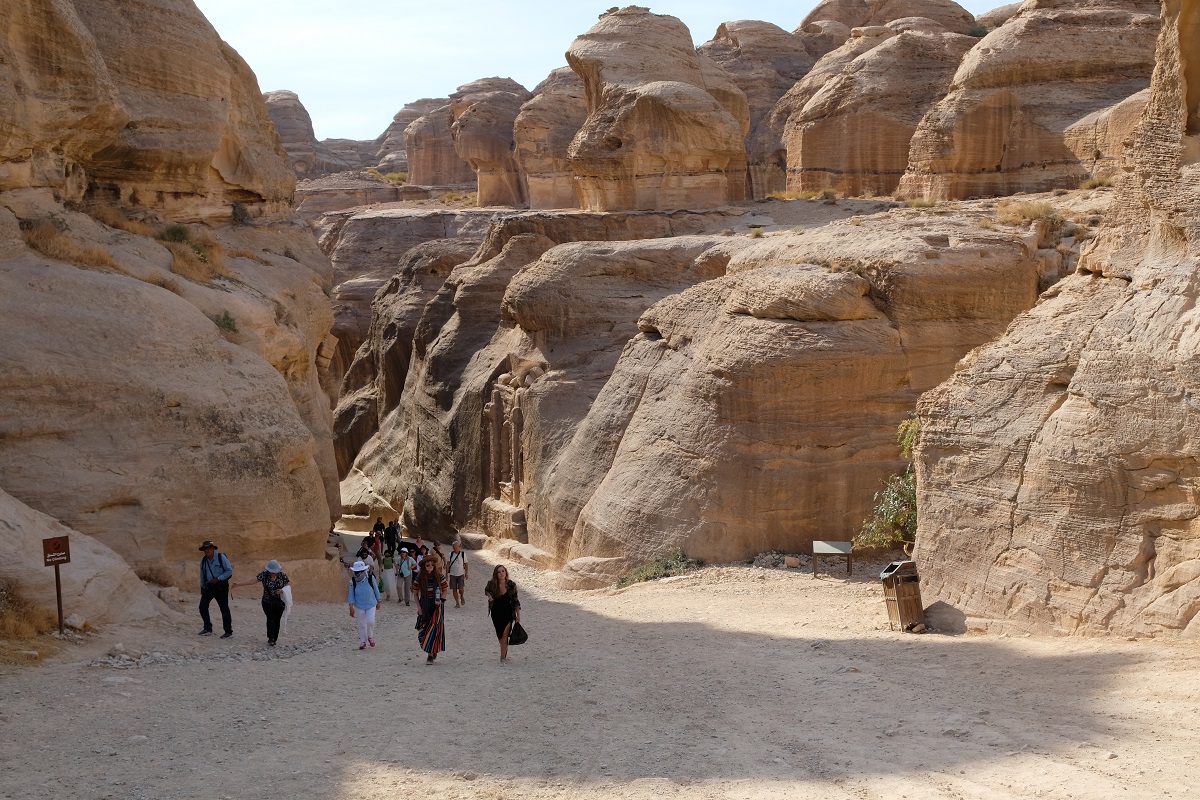

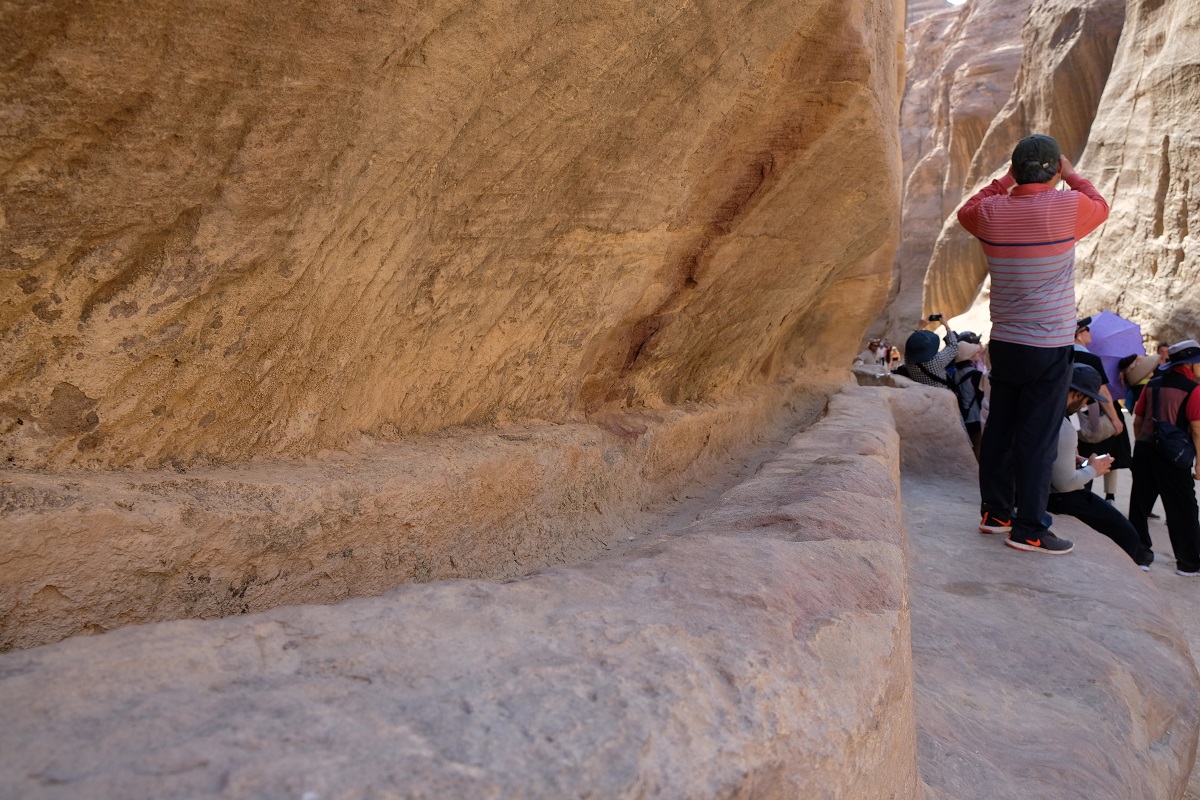


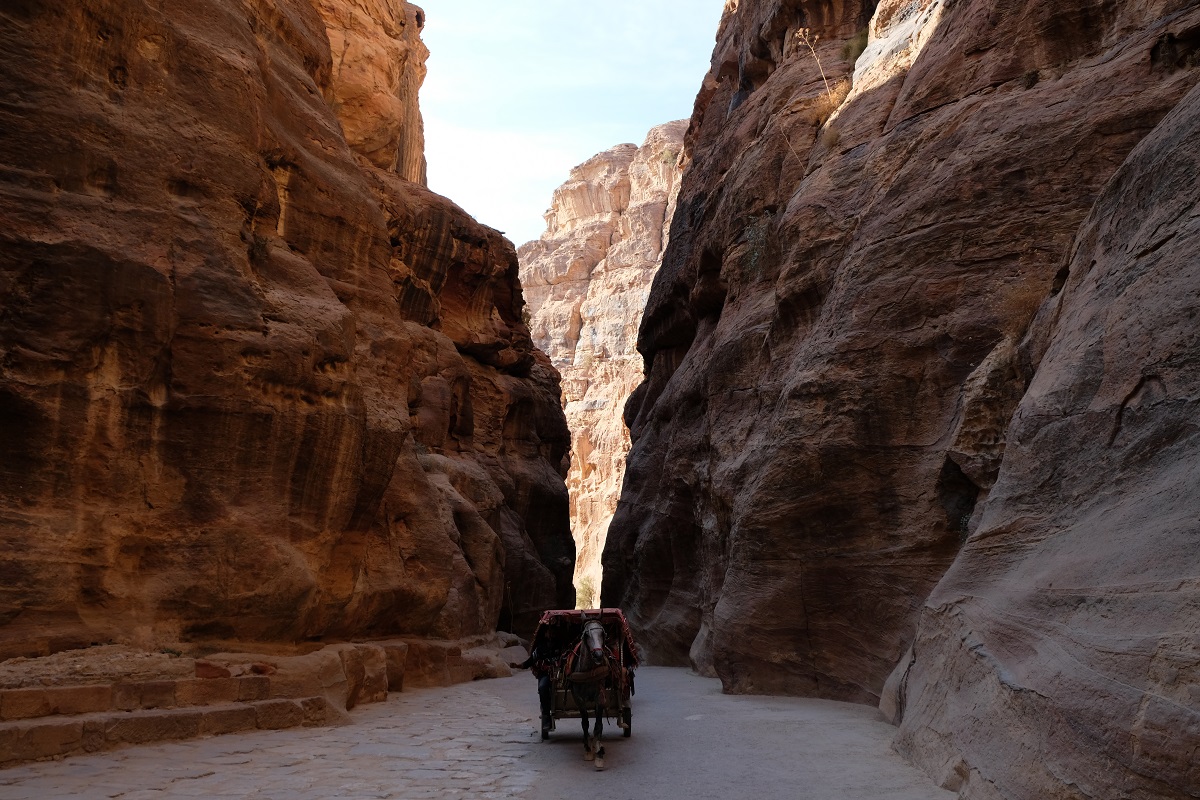

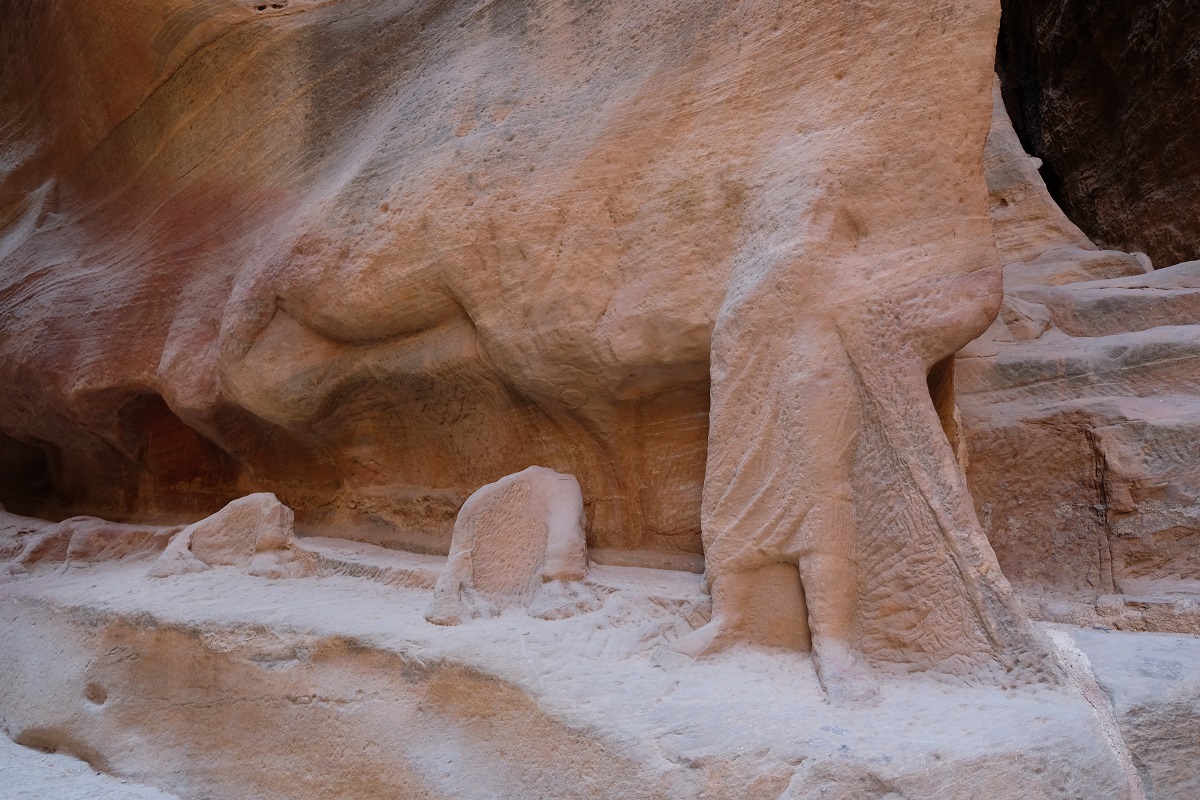

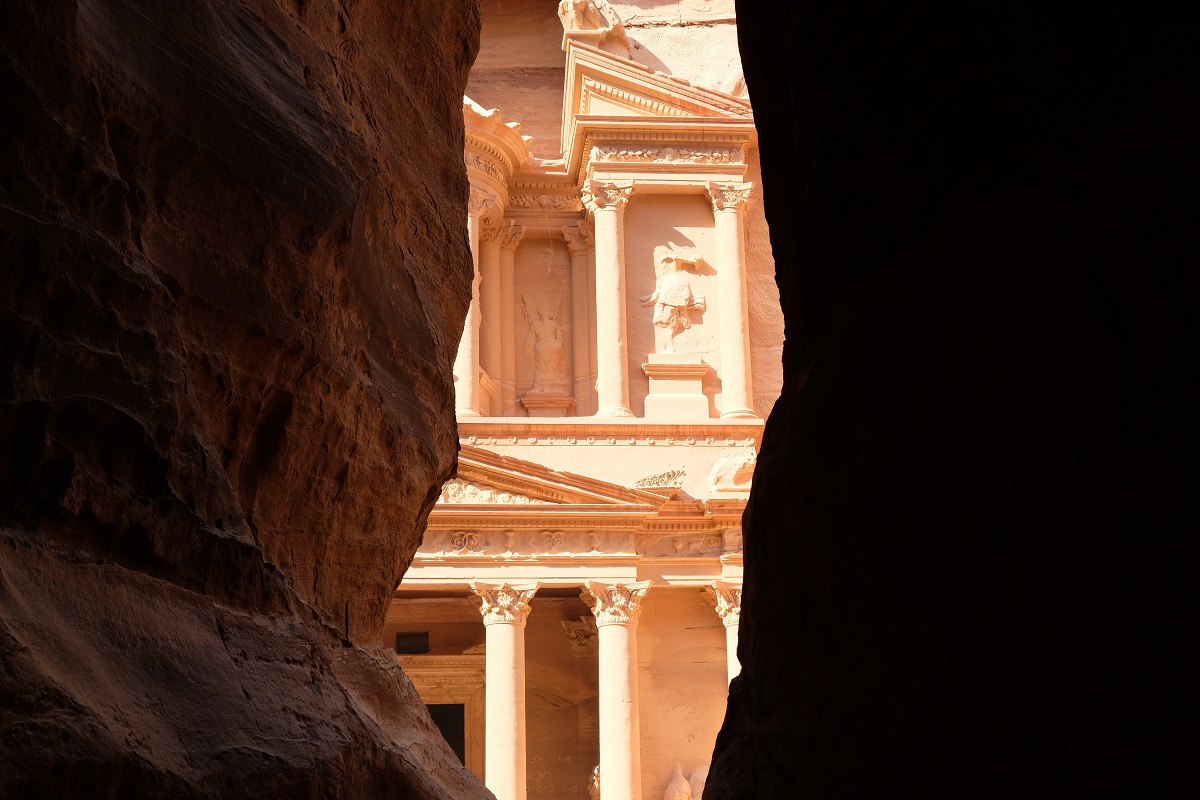


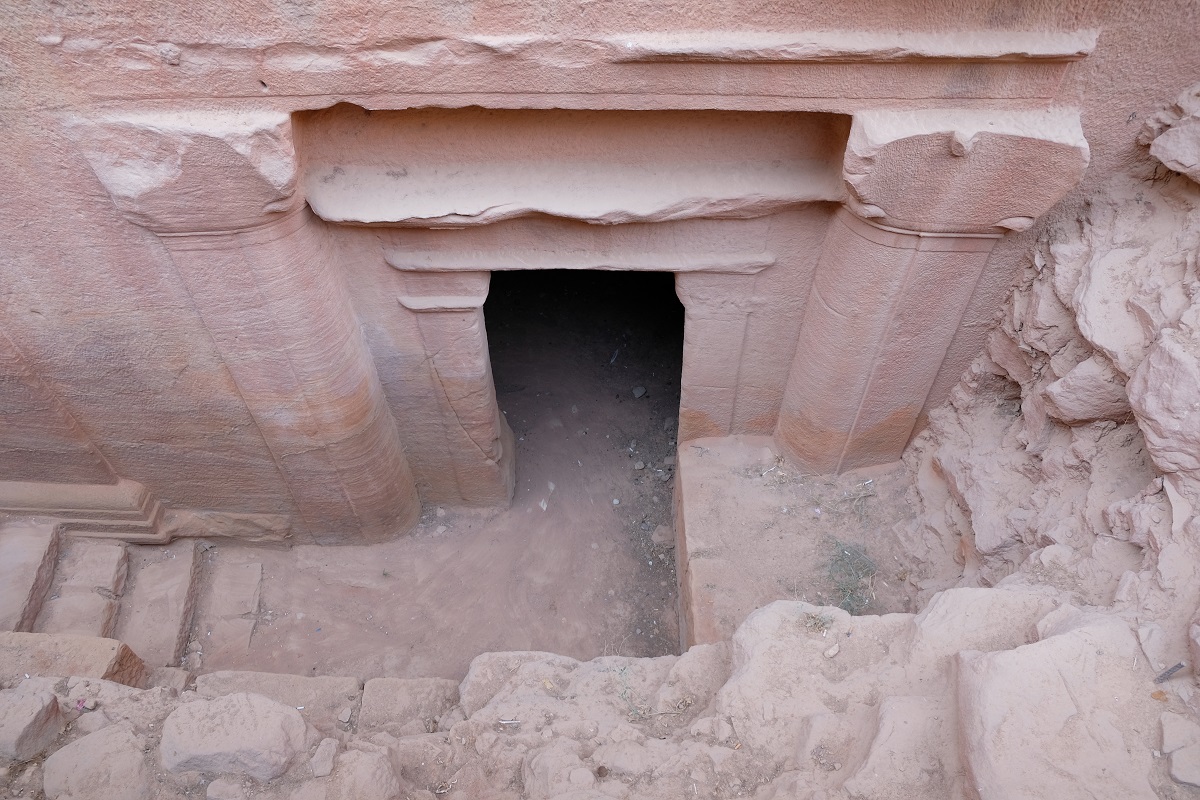






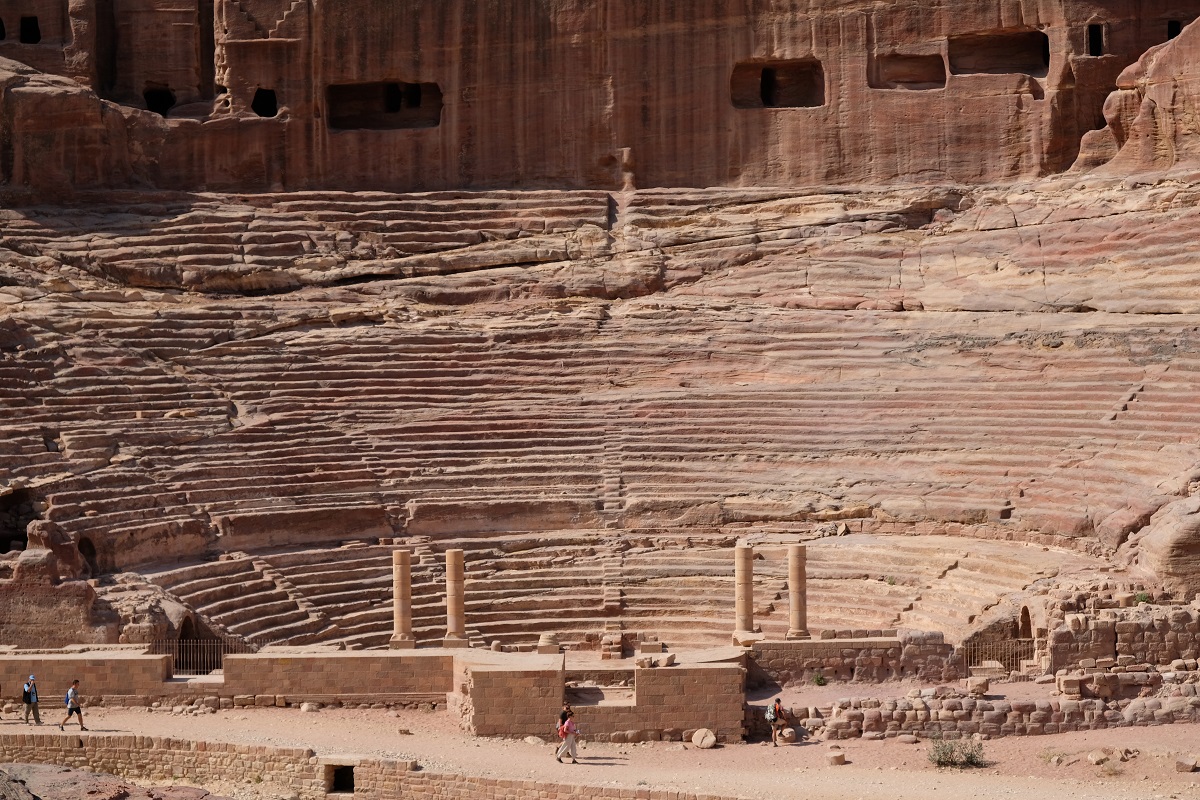



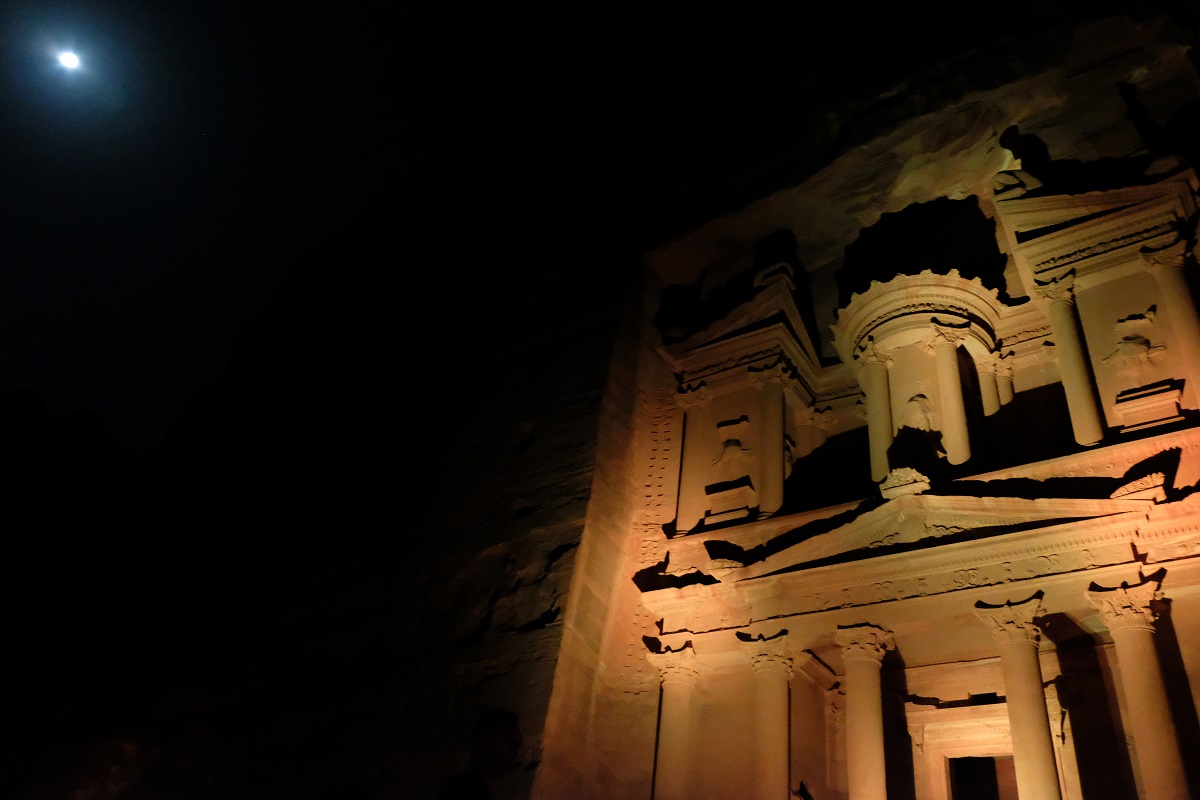
Nice post. Brings back great memories of what seems a life time ago and for some I guess it was? I was there way back in 1997!
LikeLiked by 1 person
Wow, Petra must have been much quieter when you were there! Sometimes I wish I went to places like this before they got famous, and before Instagram.
LikeLiked by 1 person
Yes, I went to many places like this 20 years ago – no crowds 🙂
LikeLiked by 1 person
Wow
LikeLiked by 1 person
Petra really is an incredible place.
LikeLiked by 1 person
Wow, I am so impressed, thank you very very much for the post and the journey you took me on! Petra has been on my list for years now – I remember very well seeing a picure of the Treasury in a (very glossy, very high-priced, very out-of-my-reach) travel magazine and curiosity and longing filling me at the very sight of it. This time I read your whole article instead of just looking at the pictures and it’s truly fascinating how Petra came to be! I will have to plan a trip there soon! But until then thanks again for taking me there by means of information and pictures! 🙂
LikeLiked by 2 people
I really appreciate your time reading this post, Katha. Jordan (along with other countries in the region, like Egypt) has fascinated many of us for so many years. I was supposed to go there in 2017, but the trip had to be cancelled and fortunately the opportunity came again to me last year. Petra was as marvelous and awe-inspiring as those travel articles had said. I do hope you’ll get the chance to visit Petra sooner than later!
LikeLike
Thank you Bama, I do hope so too!
LikeLiked by 1 person
Incredible photos. Petra captivates my imagination and it’s good to hear that it is worth the trip despite its popularity. Overtourism is something I take into consideration when deciding where to travel these days. There’s nothing worse than feeling a negative vibe while visiting places that hold so much magic. Wishing you a 2020 filled with many surprising adventures, Bama!
LikeLiked by 1 person
Thanks Julie. Seeing how fast tourism can change a place also makes me think more carefully of the places I decide to travel to. I went to Myanmar in 2012, a few months after the country opened up to the world, and it was fantastic! Then I returned in 2015. It was still an amazing place, but so many things had already changed in just three years. I hope 2020 will be a better and more fulfilling year for you as well, Julie!
LikeLiked by 1 person
Wow Bama you wrote such a great article! I wish I had the time and energy to write like you but I’m too busy and/or lazy! So I just post mostly pics! Haha. It was great to read all that I had learnt back on my trip in August. Petra is so full of features and history that a lot of what my guide said kind of left my head. Lol. Thanks for a great post, made me dream of Jordan all over again!
LikeLiked by 1 person
Thanks Anna. As you can imagine, it took me quite some time to finish this post — that and the holidays kept me away from the blogging world for a few weeks. I won’t blame you for not remembering a lot of things your guide had told you because Petra is indeed steeped in history which can be overwhelming. Glad you enjoyed this post. Hopefully my second post on Petra won’t take as much time to write as this one.
LikeLiked by 1 person
I am up to wadi rum next – but I’m always sidetracked reading posts or just living summer! My next post might not be for some months so you are doing better than me! Cheers!
LikeLiked by 1 person
Well, blogging is not a race. 🙂 I’m curious with your experience in Wadi Rum. Mine was… interesting.
LikeLiked by 1 person
Lovely photos. I’ve been reading great things about Petra Museum, and you just added to the voices.
LikeLiked by 1 person
Thank you. It’s not an overwhelmingly big museum, but it’s really well-designed with a good amount of information for first-time visitors to get a better understanding of the place they’re about to explore.
LikeLiked by 1 person
Bama, what a wonderful and fascinating post! It boggles the mind how people literally carved a city from rocks. Thanks for spending the time to research the history of the area and putting it together with your great photos for the enjoyment and education of us all!
LikeLiked by 1 person
Thank you, Marilyn. It always fascinates me to think of those people who lived thousands of years ago who came up with ideas like carving a city from rocks or piling up massive stone blocks to build pyramids. But I guess it shows how humans have always wanted to go higher and bigger, something we’re still seeing today.
LikeLike
We visited Petra in 2013 and absolutely loved it. We spent two exploring the site and there is so much to see. It was high on my list of places I wanted to see and I am glad I was able to do it. Great pics. (Suzanne)
LikeLiked by 1 person
Merci Suzanne. I only realized the true scale of Petra when I looked at this map of the ancient city, written in French and left by a previous guest at our hotel. So much to see, indeed.
LikeLike
I was there in 1976 and again a few years ago with Annie and the thrill of seeing the Treasury and the rest of the ruins again was just as wonderful as the first time. One of my favorite places in the world.
LikeLiked by 1 person
Wow, you went to Petra more than a decade before it became famous! It must have been very special to experience this ancient city when it was still relatively unknown to the rest of the world.
LikeLike
I never realized Petra was this big. Thanks for your detailed information and multiple photos.
LikeLiked by 1 person
You’re welcome, Mallee. An ex-coworker asked me about Petra a few weeks after my trip because apparently he was also going there. I asked him how many days he was planning to spend in this part of Jordan, and he said just half a day. I had to explain to him that with such a short amount of time he could only see the Treasury, which is just a fraction of what Petra has to offer.
LikeLiked by 1 person
There is more to Petra than I ever realized. Beautiful photos!
LikeLiked by 1 person
Indeed, MJ. Thanks for dropping by!
LikeLike
Magnificent photos and fascinating background and history of a place I have always yearned to visit there and hope to eventually get there some day. Thank you for sharing your trip and including so much interesting information.
Peta
LikeLiked by 1 person
The pleasure is mine, Peta. At first I was a bit worried about having to deal with big crowds given how popular Petra has become today. However, although it could get really busy in front of the Treasury at certain times of the day, I found the rest of the ancient city quite pleasant to walk around and wander without having to jostle against other tourists. Hope you’ll make it there soon!
LikeLike
Absolutely ingenious. Can you imagine how they lived back then? Your photos captured this post beautifully!
Cheers and all the best for 2020!
LikeLiked by 1 person
Every time I visit places like this I always wish I could travel back in time just to see how life was like back then. Thanks John and Susan, and all the best wishes for the year ahead too!
LikeLike
So happy to hear that Petra was as marvelous as you hoped it would be. It has been a dream of mine to explore it. Wishing you a happy new year and many future marvelous adventures.
LikeLiked by 1 person
Petra was amazing, and I think you’ll feel the same way when you explore this ancient city yourself one day — soon I hope! Happy New Year too! I hope 2020 will be a year filled with happiness and memorable experiences for you.
LikeLiked by 1 person
Mas Bamaaaa….
Baru seminggu lalu saya menginjak Petra lalu membaca pos ini, membuat saya deja vu. Saya hanya sampai Treasure saja dan tidak melihat Roman theater dan masih banyak yang tidak saya lihat karena keterbatasan waktu. Gak mungkin banget kan mengunjungi Petra untuk 2 – 3 jam visit? Belom lagi nanjak baliknya 😀 Yah, namanya juga ikut tur (bukan saya banget deh) jadi kemana-mana harus menyesuaikan jadwal. Padahal kan Petra luas banget dan enak buat diexplore pelan-pelan… Saya kebayang gimana Mas Bama dan Mas James menikmati malam di sekitaran Treasure. Bikin iri banget…. hahaha…
LikeLiked by 1 person
Petra pas musim dingin sedingin apa mbak? Rame juga kah? Gak apa-apa mbak kali ini cuma lihat the Treasury aja. Semoga suatu saat nanti Mbak Riyanti berkesempatan ke sana lagi supaya bisa eksplor sampai ujung, ke the Monastery. Saran saya at least 2 hari mbak, lebih bagus lagi 3 hari supaya gak perlu buru-buru.
LikeLike
Great post Bama, with wonderful photos. What a place! It brought back so many memories of being there with Don and the rest of the group we were traveling with at the time. Petra will always remain one of the highlights of all our travels. Blown away is right!
Alison
LikeLiked by 1 person
Thanks Alison. I think I’ve said this before, but your posts on Jordan were among the things that inspired me to explore this country. I’m glad this post of mine brought back some good memories from your trip. After all, it’s hard not to be blown away by Petra (I did encounter one person who was not impressed by the Treasury though).
LikeLiked by 1 person
I think that must be one unhappy person 😦
LikeLiked by 1 person
I have to agree that Petra is a place that lived up to every expectation I had for it. As I read your post, I was chastising myself for not knowing about or visiting that nice museum, but then I was relieved to see it wasn’t even there when I was! 🙂 Your photos and history are fantastic, allowing me to relive our own incredible visit.
LikeLiked by 1 person
I think before the new museum was opened, Petra’s sole museum was located inside the ancient city, across the colonnaded street and near the start of the hike to the Monastery. Thanks Lex. I think Petra really is one of those places that live up to most people’s expectations regardless of how popular they are.
LikeLike
Did you climb all the way up to see the Monastery? It was a bigger monument than the treasury but a bit of a climb.
LikeLiked by 1 person
We did. I will write about the Monastery in my second post on Petra sometime this month. We had a long break near this monument, waiting for the sun to shine on its facade, before going back down.
LikeLiked by 1 person
I had no idea that the entrance to Petra is that long and so narrow in parts. I can just imagine the anticipation building up as you walk through that amazing gorge. I felt like I was right there with you. I know what you mean about expectations, especially for sites of this calibre and popularity. I’m happy that it was such a great experience for you. I felt the same about the Egyptian pyramids.
LikeLiked by 1 person
Whenever the gorge narrowed down, I kept thinking “Okay, this is it! This is where I’ll get a glimpse of the Treasury.” But of course the walk on the Siq was quite long, so only when I least expected it, that first sight of the magnificent monument came into view. Now that you mentioned about the Egyptian pyramids, Egypt has been another dream destination for me since I was a kid. Someday in the near future, I hope!
LikeLiked by 1 person
Egypt is in my top two or three places I’ve visited. Our timing might have contributed to this…right after the 2011 Arab Spring uprising. We shared the magnificent sites with just a handful of other visitors. I’m sure you’d love it, especially with your knowledge and interest in history.
LikeLiked by 1 person
I think Alison and Don also went to Egypt after the uprising. It must have been magical to experience those ancient sites without having big crowds of tourists around you.
LikeLiked by 1 person
As silly as this might sounds, I somehow believe that our ancestors had much more advance technologies than what we have today. I mean, look at those rocks and stones they carved the city on, it must be hard, right? I can only imagine the tools and equipment they used to build that city as if the stones and rocks were soft like a piece of tofu. God only knows.
LikeLiked by 1 person
Sandstone is relatively easier to work on than other types of rock, although you still need good quality tools to carve out the rock and create those magnificent monuments. However, I agree with you about how advanced the technology was back then that enabled those who lived thousands of years before us to build such grand monuments.
LikeLike
Once of places I want to visit before I die 😛
LikeLiked by 1 person
You would love Jordan, Edwin. And when you’re there, I believe you’ll take as many photos as I did.
LikeLiked by 1 person
Oh definitely!
LikeLiked by 1 person
Nice pict
LikeLiked by 1 person
Thank you.
LikeLike
This post is so good! Jordan is on my bucket list. Now you have me brimming with excitement to go there
LikeLiked by 1 person
Hi Richelle. Thanks for reading. I hope you’ll get the chance to visit Jordan sooner than later.
LikeLike
Very informative with great details about Petra! Some of the details I’d missed to learn when I was there, it is good to know from your post, thank you. Extraordinary place really and it is worth all the sweat under the scorching sun from 6am to 6pm exploring it. Looking forward your Part II. 🙂
LikeLiked by 1 person
You’re very welcome. I’m glad this post gave you more information on this magnificent site. I would recommend anyone visiting Petra to do what you did, i.e. exploring this archaeological complex from dawn till dusk.
LikeLike
As always, you had me with your opening statement; nodding my head vigorously in agreement. I too know the disappointment at arriving at some underwhelming ’well-traveled’ destinations and the joy of loving other popular destinations in spite of the tourist throngs. Delighted to know that Petra (and the rest of Jordan) fit into the latter category and understand why from this post.
To walk upon the ancient roads rich with history and behold such architectural and technological (ahead of their time) marvels would be a dream come true for me as well. I thank you for giving me a ring-side seat to the experience, intertwining the past with the present-day so beautifully, making me feel like I was walking right beside you.
Your imagery is breathtaking as always. Of course, I gasped when we got to the Treasury but my excitement was built upon all the beauty that came beforehand and continued after moving on to the ancient tombs and Roman theater. And I never knew of the horse carriages at Petra that add to the charm of the place. I was also fascinated by the biblical history of Ain Musa.
Always a delight to read you!
PS. You made me roar with your preference of air-conditioned transportation to camels and had me curious to see where that story leads. I am looking forward to more in Part II
LikeLiked by 1 person
Earlier last year we went to Lebanon, and we had a great time there. The Roman ruins we saw were incredible, and there were times when we had those sites for ourselves without the presence of other tourists. So when we decided to go to Jordan, I was actually slightly worried about the crowds we would see in Petra. There were indeed a lot of people in front of the Treasury, as expected. But what I was surprised more was the size of the ancient city itself, which was massive. And this allowed us to explore some parts of the valley with only a handful of other visitors around us, which was nice.
Since then, every time I hear people planning to visit Petra just for half a day or a few hours, I always tell them how big the entire city is.
I will write about that camel story in my post on Wadi Rum. In the meantime, I’m planning to publish the second part of my story on Petra this coming weekend.
Thanks for reading and sharing your thoughts, Lisa!
LikeLiked by 1 person
So nice to see that you still write, Bama. Hello to James as well. 🙂
LikeLiked by 1 person
James! Wow, it’s been ages since I heard from you the last time. Hope all is well.
LikeLike
Pingback: Petra the Magnificent – Part 2 | What an Amazing World!
I had this one in my inbox for awhile as I was waiting to compose my own thoughts on Petra. Amazing post Bama! So much history and knowledge. I too was blown away by Petra. We first went after Little Petra in the afternoon on the first day and walked just to the Treasury. The next day, I walked over 8 hours from start to Treasury, up to Monastery and then all the way back around on a trail to the High Place of Sacrifice (hardly anyone was on the trail it was amazing!). The only thing we did not do was Petra at night. It rained so it got canceled. Was it worth it? I heard a lot of yes and nos. Excited to read your second post.
LikeLiked by 1 person
Thanks Nicole! Except for Little Petra and the High Place of Sacrifice, your itinerary looks pretty similar to ours. On our second day, after getting up early to beat the crowd, and then hiking up to the Monastery, before seeing the Petra Museum after lunch, we decided to do Petra by Night. So that day we walked down the entire length of the Siq back and forth several times. To us Petra by Night was a rather underwhelming experience. Although I loved the night walk along the Siq which was illuminated by candles, with the moon shining brightly above us and this serene instrumental music filling the air, the main show became a bit too monotonous and repetitive after a while. However, we didn’t regret being there for the ambiance made my mind wander in time, back to the days when Petra was still a thriving city filled with foreign caravans.
LikeLike
Petra was a dream come true for me, Bama – of the places we visited in Jordan, it was easily my favorite. I’ll always remember that first sighting of the Treasury, and how it felt to stand at the natural courtyard and admire the 2,000-year-old wonder in its sun-drenched glory. Even after seeing so many photos and reading about it for years, the size of the monument and the beauty of its detailed carvings simply blew me away. And we were so lucky to visit the well-designed Petra Museum just a few months after it opened.
LikeLiked by 1 person
Nothing beats the anticipation building up toward the end of the Siq and that first glimpse of the Treasury from the narrow natural entrance way. Not only were the Nabateans masters of rock carving, but they were also great at building grand monuments in the most awe-inspiring setting. Petra truly didn’t disappoint despite its popularity.
LikeLiked by 1 person
Great post and amazing photos, thank you for showing us this beauty !!
LikeLiked by 1 person
My pleasure! Thank you for dropping by, Valentina. I’m glad you enjoyed this post.
LikeLiked by 1 person
Very welcome Bama! I would like to come more often (subscribe) but don’t know where I can do it?
LikeLiked by 1 person
Hi Valentina. You can either click the subscribe button at the bottom right of each post, or click the “Sign me up!” button at the very end of each page.
LikeLiked by 1 person
Petra is one of my favorite places! Great photos!
LikeLiked by 1 person
Truly one of the most spectacular places on the planet. Thanks Henry!
LikeLike
Pingback: A Taste of the Levant: Lebanon | What an Amazing World!
Pingback: A Taste of the Levant: Jordan | What an Amazing World!